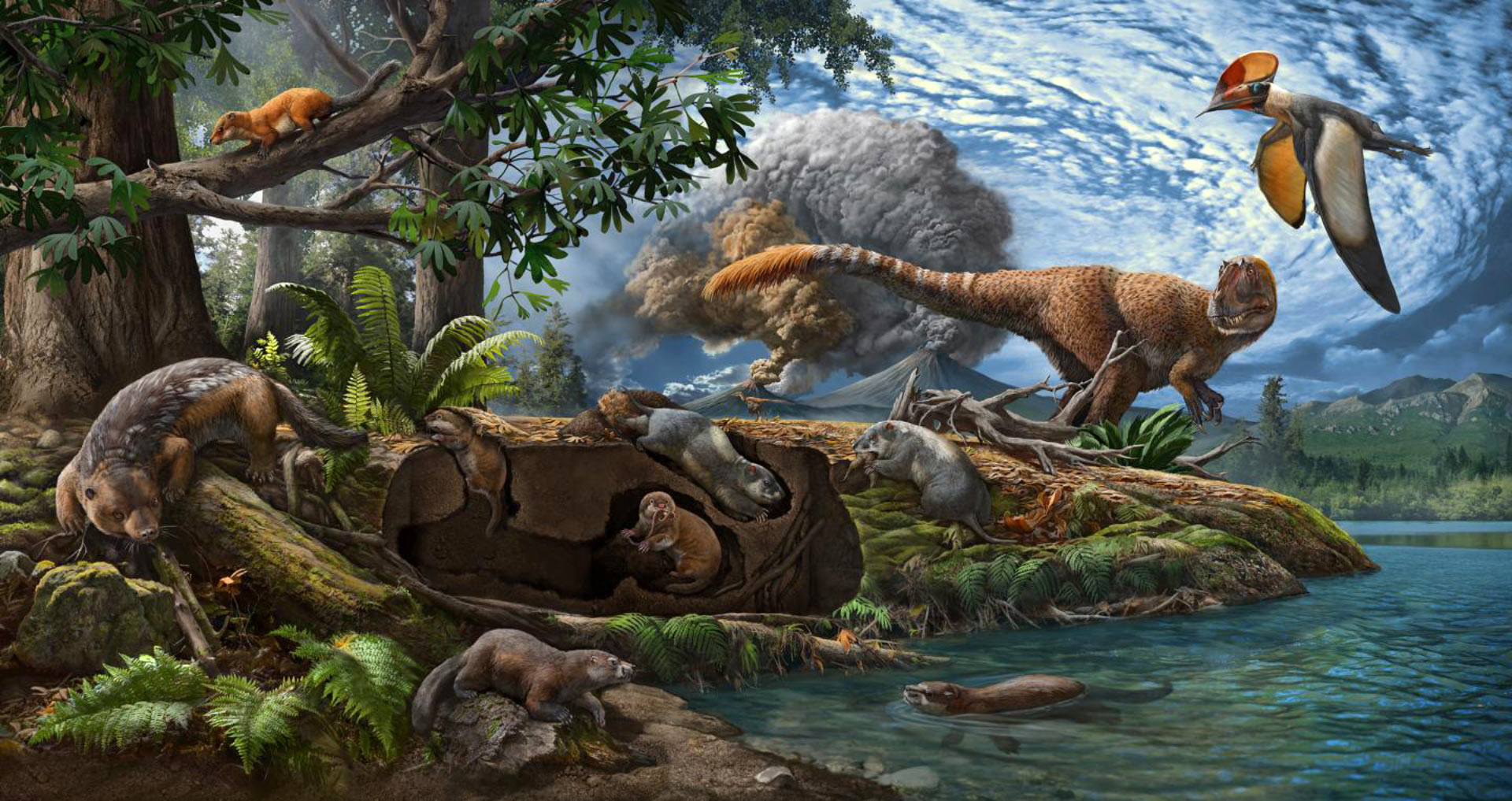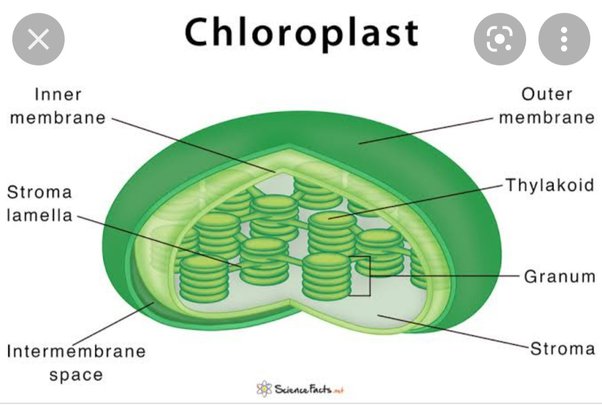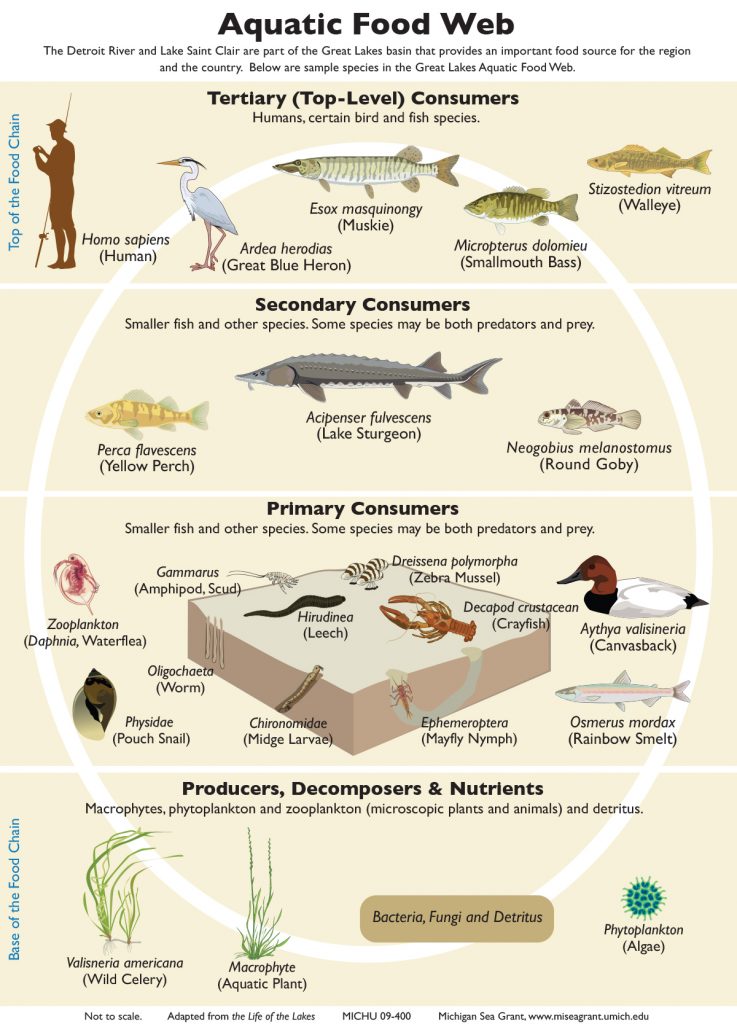Biota
The Importance of Biota on the Environment
 Photo courtesy of SCI NEWSOpens in new window
Photo courtesy of SCI NEWSOpens in new window
Biota is the term used to describe all the living components of the planet. Everybody who is alive at the present time depends on the biota for their well-being. How is this so? Simple!!!!. Everybody eats. All the food we eat comes from living organisms. Yes, that’s right, living organisms. Vegetables are living or once were. |
Meat, which comes from various animals, also depends on plants for animals’ survival. Even those animals that eat other animals depend on plants, because, like us, meat eaters depend on animals that mainly eat plants.
These plant eaters are called herbivores. Those that eat meat are called carnivores. Organisms such as humans eat both plants and animals; these are called omnivores. All this leads us to the next environmental topic: nutrition types and food chains.
Organisms' Nutrition
Nutrition of organisms falls into the following categories:
- Autotrophic
- Heterotrophic
- Saprotrophic
- Chemosynthetic
- Autotrophic
Autotrophic organisms are generally plants which get their nutrition from inorganic chemicals. These are chemicals that do not contain carbon in covalent linkage. For those of you who don’t know what that means, covalent linkage means that carbon atoms share electrons. Examples of organic chemicals are sugars, alcohol, proteins, starch etc. All of these contain carbon. Examples of inorganic chemicals include water (H2O), table salt (NaC1) and potassium phosphate (K3PO4), and many others.
Plants utilize the chemicals and make food by the process of photosynthesis, which can be expressed in this simple equation.
6H2O + 6CO2 + sunlight → C 6H12O6 + 6O2
This process takes place in the chloroplast of a plant cell.
Essentially this equation means that water (H2O) and carbon dioxide (CO2) plus sunlight makes glucose (a sugar) and oxygen. Figure X-1 shows a typical chloroplast where photosynthesis takes place.
 Figure X-1. A diagram of a chloroplast. This is the organelle mainly involved in photosynthesis.
Figure X-1. A diagram of a chloroplast. This is the organelle mainly involved in photosynthesis. |
- Heterotrophic
Heterotrophic is the term that refers to those organisms that eat preformed organic chemicals. This includes humans, cockroaches, ants, certain bacteria and fungi. It’s hard to imagine that when someone orders a steak with potatoes in a restaurant s/he is ordering preformed organic chemicals in the form of protein and starch.
For those of us who eat, we know that we eat food containing nutrients in the form of fats, proteins and carbohydrates, all organic.
- Saprotrophic
Saprotrophic (formerly called saprophytic) is the term that mainly refers to fungi and bacteria which obtain their nutrients from dead organisms.
If you have ever been in the woods and seen a log rotting, you have seen that it is rotting primarily by fungus. This is an excellent example of a saprotrophic organism. It is these organisms that break down plants and animals. Imagine if this couldn’t happen and a dead cow (for example) would not decompose—soon there would be thousands of dead cows all over the place!
- Chemosynthetic
These are organisms that obtain their energy from the oxidation of hydrogen sulfide gas (H2S). This results in the synthesis of carbohydrates such as occur during photosynthesis in the Calvin Cycle.
6CO2 + 6H2O + 3H2S – C6H12O6 + SULFUR COMPOUNDS
Examples of organisms that obtain their energy this ways are deep sea tube worms and mussels found on the thermal vents which are located in areas where tectonic plates merge. (Tectonic plates are masses where parts of the planet move.) These vents were discovered by Robert Ballard of Woods HoleOpens in new window. Ballad was also the scientist who discovered the location of the Titanic.
Food Chains
A food chain is the term used to describe levels of food eaten by all organisms. Put simply, it states “who eats whom.”
A food chain starts with a primary producer, a PLANT, being eaten by a primary consumer, an ANIMAL. This primary consumer is in turn eaten by a secondary consumer, another ANIMAL. The secondary consumer, too, may in turn be eaten by a tertiary consumer, another ANIMAL.
 Figure X-2. Aquatic Food Web | Source: Michigan Sea GrantOpens in new window
Figure X-2. Aquatic Food Web | Source: Michigan Sea GrantOpens in new window |
The Ecological Function (Importance) of All Organisms
The importance of all, and I mean all, the organisms and ecosystems on the planet cannot be underestimated. Often, when one is asked, “Does every species have a function on the planet?” the answer is yes.
What if we don’t know the function of a species? Then we can still say that it has an ecological function. That is why we have to make every effort to prevent species from disappearing, no matter how useless or annoying they are to the human race.
A good example of this is the mosquito. We know that on a hot summer day if there are plants and water nearby, humans get bitten by mosquitoes. Obviously, many people consider mosquitoes to be pests. True, but they have an ecological function. What is their function?
For one thing, the blood that they get from humans and other organisms that they bite is used to feed their eggs. This creates more mosquitoes. Now, what organisms depend on mosquitoes for their survival? Simple. Birds, dragonflies and bat species are among the many organisms that use mosquitoes as a food source.
One thing that everyone forgets or doesn’t even notice is the fact we humans think that we own the Earth and that we can do whatever we want to it. If we look at warfare and other activities that damage the Earth, we see the effects. (For a very good discussion of warfare on the Earth’s ecosystems see the book The Ecology of Warfare, by Susan D. Lanier-Graham, 1993).
Among the major effects of warfare or other destruction of habitat is depletion of certain organisms such as fish or trees. These depletions have serious consequences that warmongers and developers don’t take into account.
Depletion of fish stocks, whether by overfishing or warfare, has disastrous consequences that cannot be foreseen, such as animal and human hunger. Hunger is caused by depleting protein, such as killing plants and animals. By doing this, new diseases due to natural selection — which is a form of evolution — may occur.
It is evident that without a life-sustaining environment, life as we know it will cease to exist.
You might also study:
- Sadava. D, H.C. Heller, G.H. Orians, W. Purves, D.M. Hillis. Life: The Science of Biology, 8th edition. Sinauer Associatews and W.H. Freeman and Company 2008.
- Cunningham, W.M. Cunningham and B. Saigo, Environmental Science: A Global Concern., McGraw Hill, 2007, p.374.
- The Calvin cycle takes place in the stroma, the part of the chloroplast where CO2 is converted to sugars.
- Wilson, E. O. “Vanishing before our eyes.” Time Magazine April-May 2000, pp. 29 – 30.
- R. Costanza, R. d’Arge, R.de Groot, S. Farber, M.Grasso B. Hannon, K. Limburg, S. Naeem, R.V.O’Neil, J. Paruelo, R. Raskin, P. Sutton and M. van den Belt, “The Value of the World’s Ecosystem Services and Natural Capital,” Nature 385 (May 1997): 253 – 262.

